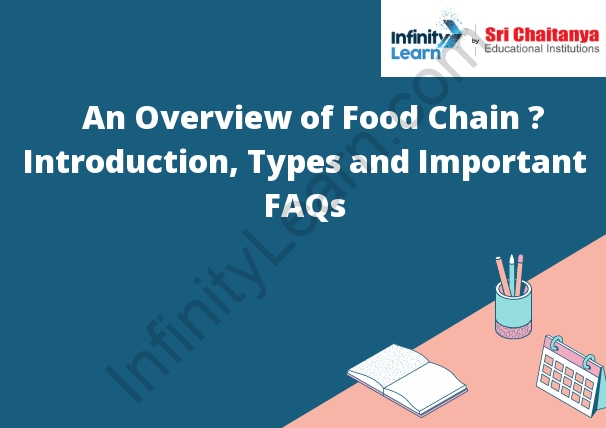Table of Contents
overview of food chain
The food chain is a simple model of how energy and matter flow through an ecosystem. The food chain starts with the primary producers, such as plants, which use sunlight to produce energy and organic matter. This energy and matter is then eaten by the primary consumers, such as herbivores, which then get eaten by the secondary consumers, such as carnivores. The food chain ends with the tertiary consumers, such as top predators.

The Food Chain Consists of Four Major Parts, Namely:
Producers, Consumers, Decomposers, and the Environment.
Producers are the organisms that produce their own food through photosynthesis or chemosynthesis.
Consumers are the organisms that eat other organisms for food.
Decomposers are the organisms that break down dead organisms and organic matter into simpler molecules.
The environment is everything that surrounds and influences the producers, consumers, and decomposers.
Food Web
A food web is a diagram that illustrates the feeding relationships between species in an ecological community. Food webs are composed of a series of interconnected food chains, where each species is a link in the chain. The arrows in a food web indicate the direction of energy flow. The larger the arrow, the more energy the species transfers to the next link in the chain.
In a food web, the predators are at the top of the web, and the prey are at the bottom. The arrows indicate that the predators eat the prey. The arrows also indicate that the prey are eaten by other predators.
Food webs are important because they show how energy and nutrients flow through an ecosystem. The food web helps to explain how the loss of one species can affect the populations of other species.
Types of Food Chain
There are three types of food chains:
1. Detritus food chain: This food chain starts with dead organic matter (detritus) and ends with scavengers.
2. Herbivore food chain: This food chain starts with plants and ends with carnivores.
3. Carnivore food chain: This food chain starts with animals and ends with carnivores.
FAQs
Q. What is a food chain?
A. A food chain is a linear sequence of organisms through which energy and nutrients are transferred from one species to another. It illustrates the relationship between the different organisms in an ecosystem and how they depend on each other for survival.
Q. What are the components of a food chain?
A. The components of a food chain include producers, consumers, decomposers, and scavengers. Producers are organisms that produce their own food, such as plants or algae. Consumers are organisms that obtain their energy from other organisms, either directly or indirectly. Decomposers are organisms that break down dead or decaying organic matter and release nutrients back into the environment. Scavengers are organisms that feed on dead or decaying organisms.
Q. How does a food chain work?
A. A food chain starts with a producer, which is usually a plant. The plant is eaten by a consumer, which is usually an animal. The animal is then eaten by another consumer, and this process continues until the top consumer is reached. The energy from the sun is transferred to the producer, and then to each consumer in the chain.
Q. What is the difference between a food chain and a food web?
A. A food chain is a linear sequence of organisms through which energy and nutrients are transferred from one species to another. A food web, on the other hand, is a more complex network of interconnected food chains. It includes multiple pathways of energy flow and multiple sources of energy.







